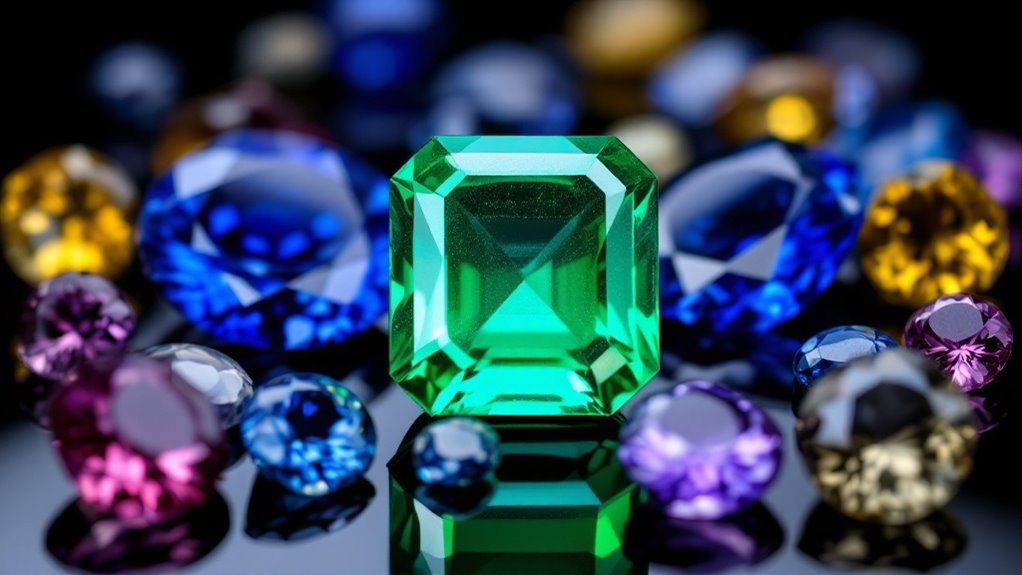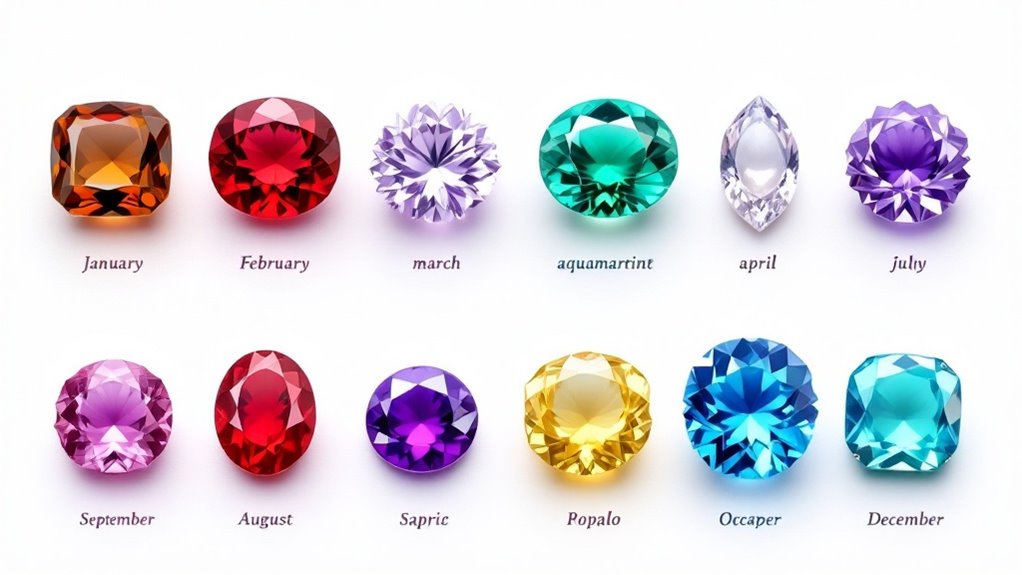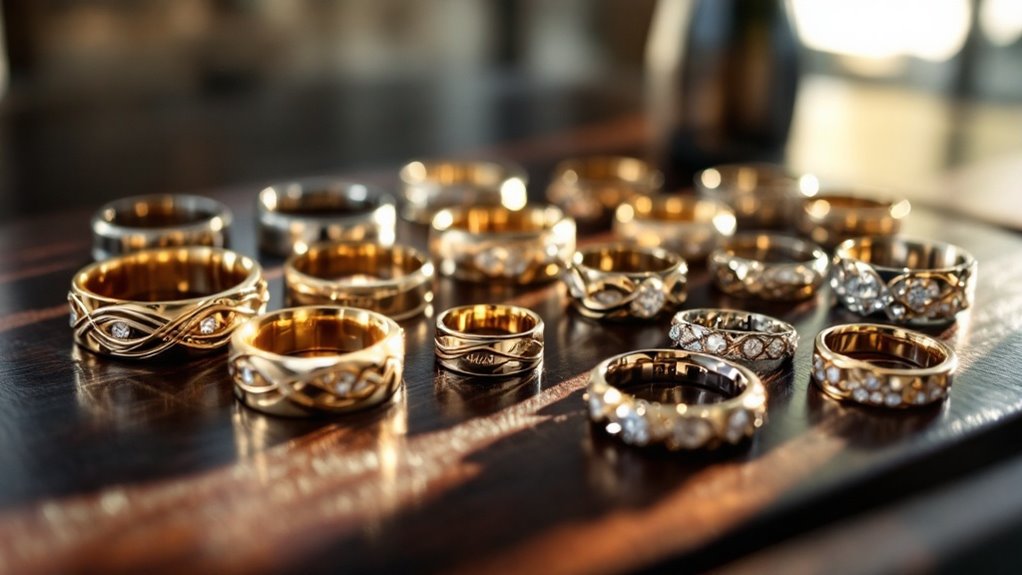The three best gemstone color pairing techniques include complementary colors, which create visual contrast by pairing opposites on the color wheel, such as amethyst with citrine. Analogous color schemes promote harmony using adjacent hues, like emerald with blue-green tourmaline. Split complementary designs incorporate a base color with two adjacent hues, exemplified by blue paired with red-orange and yellow-orange. Each method supports balance and aesthetic appeal. Discover how these techniques transform jewelry into extraordinary designs.
Complementary Colors in Gemstone Pairing
Complementary colors, when utilized in gemstone pairing, offer a harmonious yet striking visual contrast that enhances the allure of each stone. By selecting hues directly opposite on the color wheel, such as amethyst paired with citrine, designers can create gemstone color combinations that captivate the eye. These gemstone pairing ideas leverage the inherent gemstone color contrast to amplify aesthetic appeal and evoke desired themes. Effective gemstone color harmony is achieved by balancing saturation and brightness, ensuring neither stone overpowers the other. This technique enriches gemstone aesthetics, making designs particularly resonant in seasonal jewelry, like festive ruby and emerald combinations.
Analogous Color Schemes for Harmonious Designs
Analogous color schemes offer a seamless and harmonious approach to gemstone design by utilizing hues that are adjacent on the color wheel. This technique facilitates gemstone color pairing by creating cohesive and visually appealing designs. For instance, pairing an emerald with a blue-green tourmaline and a light green peridot exemplifies effective gemstone styling techniques. The smooth shift between these colors enhances gemstone color balance, ideal for layered jewelry pieces. Typically, one dominant color is accentuated by supportive hues, offering gemstone design inspiration. Such combinations evoke moods like tranquility or warmth, providing effective gemstone coordination tips for achieving a balanced aesthetic.
Exploring Split Complementary Combinations
Split complementary color schemes offer a dynamic approach to gemstone design by incorporating one base color and the two hues adjacent to its opposite on the color wheel. This method creates a harmonious balance, providing contrast without overwhelming. It is one of the best gemstone matching techniques, utilizing gemstone color theory to create a vibrant yet cohesive gemstone color palette. For instance, pairing blue with red-orange and yellow-orange can highlight each stone’s unique features. This technique simplifies how to pair gemstones, ensuring effective jewelry color matching. Such combinations offer practical gemstone fashion tips for achieving visually appealing, well-balanced jewelry designs.
Conclusion
In the art of gemstone pairing, understanding color relationships can transform designs into enchanting masterpieces. By leveraging complementary colors, jewelers can create dynamic contrasts that enhance each stone’s brilliance. Analogous color schemes offer harmonious blends, resulting in soothing and cohesive arrangements. Meanwhile, split complementary combinations provide a balanced yet vibrant look, adding a touch of creativity and intrigue. Mastering these techniques allows designers to craft visually stunning pieces that resonate with elegance and sophistication, appealing to diverse aesthetic preferences.




Leave a Reply